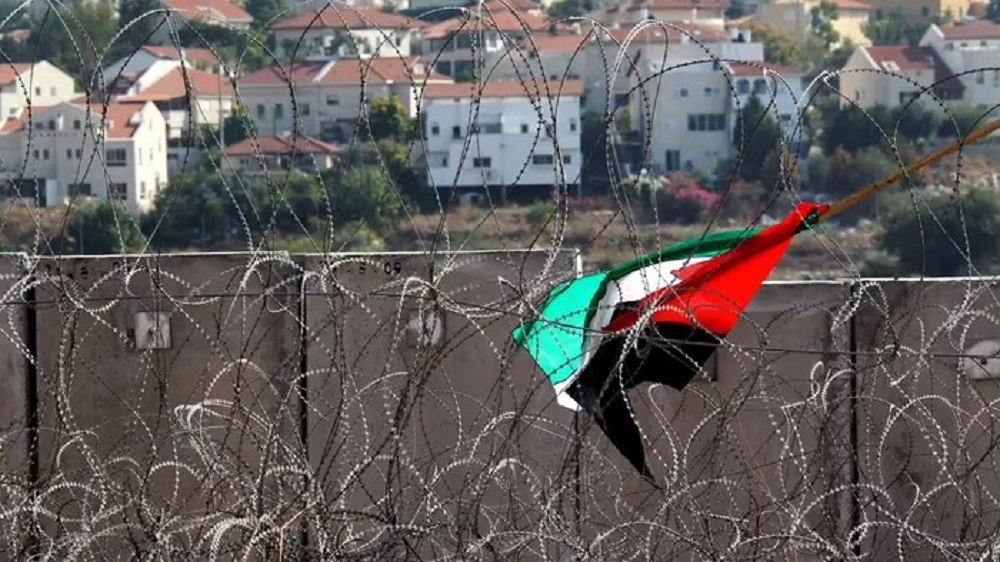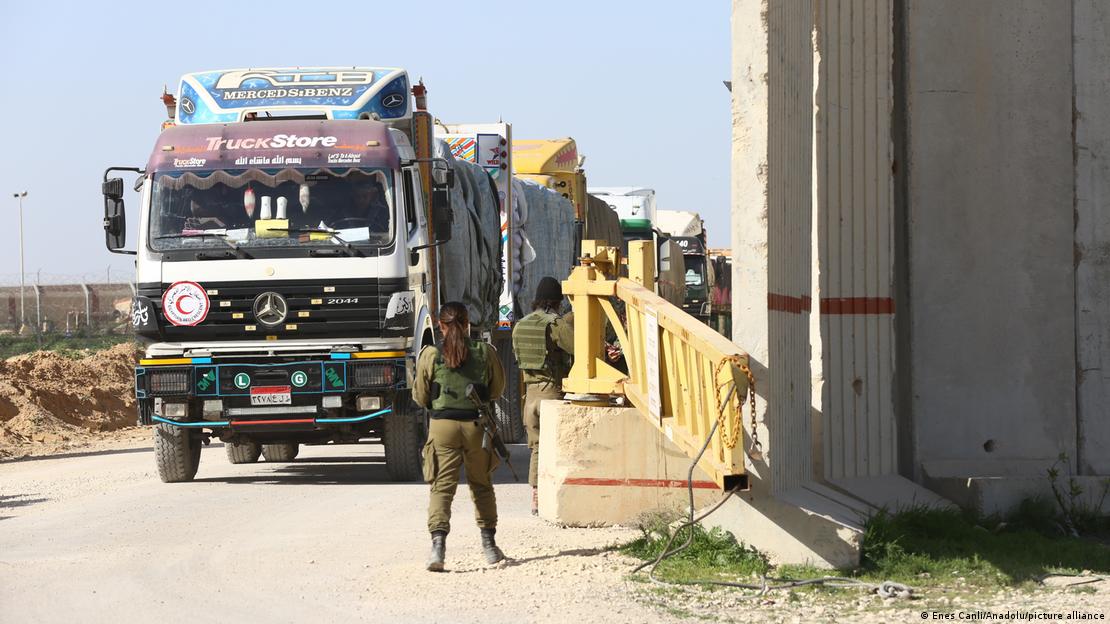The search for the Middle East formula

In recent months, we have become inured to a dangerous escalation in the Middle East that goes far beyond Israel and the Gaza Strip. Now, during Ramadan, everyone is looking anxiously towards Jerusalem to see whether the situation at the Al-Aqsa Mosque will explode.
The Shia Hezbollah in Lebanon is engaging in daily skirmishes with the Israeli army on the Lebanese-Israeli border in an effort to keep some of Israel's troops there so that they cannot be deployed in Gaza. And despite an ever-growing American and British armada, as well as a German warship in the Red Sea, the Houthi rebels in Yemen are still firing at merchant ships nearly every day.
All of these circumstances have one thing in common: they are linked to the war in Gaza. Hezbollah and the Houthis justify their actions by claiming that they want to build up enough pressure to end the war in Gaza. They are receiving logistical support for their efforts from Iran – both open and covert – thus acting as its satellite. Moreover, large swathes of the public in the Arab world have signalled approval for these actions, specifically because Hezbollah and the Houthis are linking them to the Palestinian question. The military response to these groups by the USA and others is interpreted almost as complicity in the Gaza war.

A region in turmoil
The war and the suffering of the people in the Gaza Strip have plunged an entire region into turmoil. Today it is clearer than ever that unless the Palestinians are granted more rights, there will be no stability in the region.
Gone are the days when the West hoped that the Middle East could be stabilised while simply ignoring the Palestinian question. The Abraham Accords, in which the United Arab Emirates and Bahrain, and later Morocco and Sudan, normalised relations with Israel, were widely celebrated. They were supposed to usher in a new path to peace, and the United States hoped that Saudi Arabia, too, would soon sign on.
However, those behind the agreement neglected to consider the Palestinians and Arab public opinion, for which the Palestinian question is still of central importance even 75 years after the founding of Israel. So the question is not only what will happen to the Gaza Strip after the war but also what scenarios currently exist for resolving the overall Palestinian dilemma. After all, seven million Israeli Jews and seven million Palestinians and their demands and aspirations are not simply going to disappear into thin air.
There are basically four possible scenarios.

تهجير الفلسطينيين إلى مصر؟
هل يُهجَّر كافة أهالي غزة إلى شبه جزيرة سيناء المصرية ويُوَطَّنون فيها؟ هذا ما حدَّدته خطة استراتيجية اقترحها معهد مسغاف الإسرائيلي المؤثر. في حواره مع موقع قنطرة يشرح الخبير الاقتصادي الألماني الإسرائيلي شير هيفَر مضمون هذه الخطة. حاورته الصحفية الألمانية إليسا راينهايمَر.
Scenario 1: maintaining the status quo
The first scenario would be to maintain the status quo, i.e. continued Israeli occupation of the West Bank and a further expansion of Israeli settlements there. The Gaza Strip would continue to be sealed off, raising the major question as to who would manage the ruins and the 2.3 million people still living there after the war.
The status quo would also mean continued unequal treatment of Palestinians who live in Israel and hold an Israeli passport. They now make up a fifth of Israel's population.
The biggest problem with maintaining the status quo is that it has never been a sustainable situation for the Palestinians. Moreover, since 7 October at the latest it has been clear that it is not sustainable for the Israelis and their security either.
What's more, under the current status quo, the West is increasingly forfeiting its position as opinion leader in the conflict. This is illustrated by the votes in the UN General Assembly, where 153 countries recently voted in favour of a ceasefire in the Gaza Strip and ten against, among them Austria. A total of 23 countries, including Germany, abstained. Even in the UN Security Council, the only thing blocking a call for an immediate ceasefire is the US veto.
The complexity of the situation is evident from the legal proceedings initiated by South Africa and accepted by the International Court of Justice, which is examining whether Israel is committing genocide in the Gaza war.

Scenario 2: expulsion of the Palestinians
The second scenario, which is being repeatedly and openly debated by certain ministers in Israeli Prime Minister Benjamin Netanyahu's ultra-right-wing cabinet, is the expulsion of the Palestinians from the Gaza Strip. Some settlers are even discussing their possible expulsion from the West Bank as a second step. Finance Minister Bezalel Smotrich and Minister of National Security Itamar Ben Gvir make no secret of the fact that they envision Gaza's future without most of its Palestinian inhabitants.
In purely military terms, Israel would probably be in a position to carry out this kind of ethnic cleansing. Politically, however, such a scenario is difficult to imagine. The international outcry would be too great. Even Israel's key military and financial supporters in Washington and in some European capitals would come under pressure and would have to reconsider their position.

Scenario 3: two-state solution as a way out
This brings us to the third scenario: the two-state solution, i.e. a Palestinian state alongside Israel. The EU and the USA have been officially calling for such a solution for the past two decades.
However, the Europeans and Americans now seem to be just paying lip service to this scenario, which has degenerated into a kind of mantra that has always accompanied the status quo. No world power has ever actually invested political capital in trying to push through this solution against the will of Netanyahu, who has made every effort to torpedo the plan for as long as he has been in office.
His strategy here chiefly involves the massive expansion of Israeli settlements in the West Bank, which are illegal under international law. In the years since the 1993 Oslo Agreement, which was meant to lead to a Palestinian state, the number of settlers has risen from 264,000 to 502,000. Looking at a map of the West Bank with its settlements, settler-only roads and restricted Israeli military zones, there is no longer any contiguous, potential Palestinian territory.
Some Palestinians are also critical of a two-state solution. Although this would give them their own state, they would have to give up their national ambitions for the whole of Palestine. They argue that such a state would be founded on just 22 per cent of their original territory.
Despite much resistance and the practical question of whether there would even be enough territory left for a viable Palestinian state, the two-state solution is being upheld internationally as purportedly the only viable path.
This solution would only really be conceivable, however, if at least some of the Israeli settlements were to be abandoned. UN Secretary-General Antonio Guterres has said in this regard: "Over decades, the two-state solution has been traduced, undermined and left for dead many times. However, it remains the only way to achieve durable and equitable peace in Israel, in Palestine and in the region."
Scenario 4: "the Republic of Haifa" – one state for all
The fourth scenario involves a one-state solution, i.e. a secular, democratic state in which Israelis, Palestinians, Jews, Muslims and Christians would live together with equal rights. Both sides would have to give up their national ambitions based on a Jewish or Palestinian identity. There would be no Palestinian state, but nor would there any longer be an exclusively Jewish one. This would also spell the end of the Zionist vision as it is implemented today. This idea has been proposed by an absolute minority on both sides, mostly by figures from the world of academia.
One of its Israeli advocates is a former employee of the Israeli domestic intelligence service, Shin Bet, the philosophy professor Omri Böhm. He asks whether it is better to give up Zionism or to hold fast to an idea tainted by the expulsion of the Palestinians. Three years ago, he argued in his book Israel – A Utopia for a rethink of the concept of Israeli statehood. Instead of a two-state solution, his utopian vision involves an "Israeli-Palestinian federation – one country for both peoples".
Similarly, the renowned Palestinian intellectual and visionary Edward Said, who died in 2003, spoke 20 years ago of the possibility of a one-state solution in which rights and obligations would be shared and everyone would be equal under the law. If everyone had the same rights and privileges, the principles of religious chauvinism, national ideologies and dogmas of exclusivity would be gone forever, Said wrote.
The one-state solution would change one of the fundamental hallmarks of the Israeli–Palestinian conflict. It would no longer be a dispute about territory but about the fundamental question of the equal rights of two peoples living in one state.
Looking at all four scenarios, it is obvious that the first two – maintaining the status quo or expelling the Palestinians – are ultimately military solutions. They rely on Israel's military superiority and its dwindling international support.
The other two options – the one-state or two-state solution – are of a political nature. They are the only solutions that would create greater justice. After all, 7 October made one thing abundantly clear: there can be no security for Israelis unless the Palestinians are politically granted their rights in some form.
© Qantara.de 2024
Translated from the German by Jennifer Taylor
